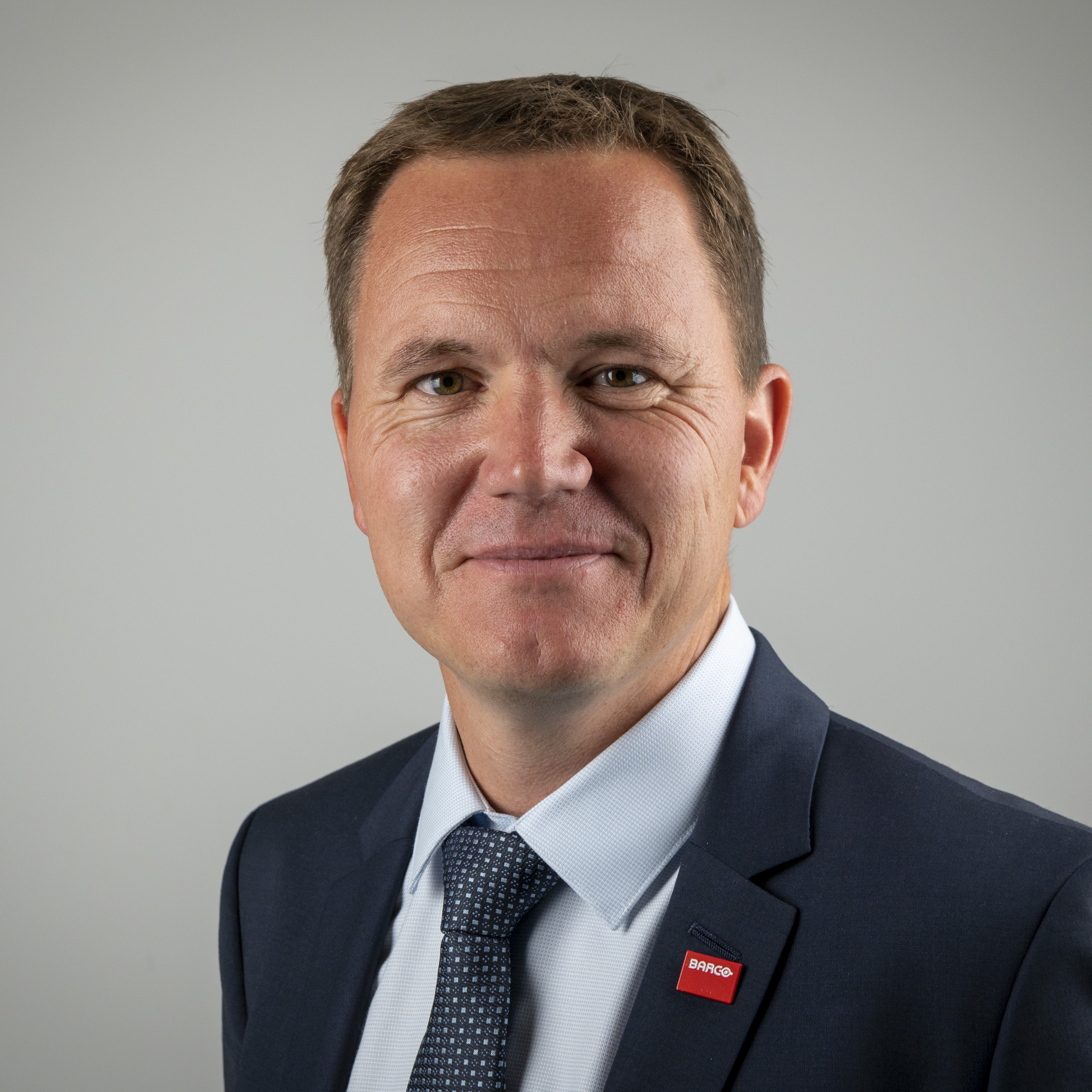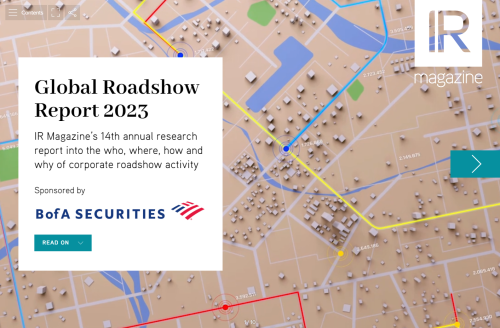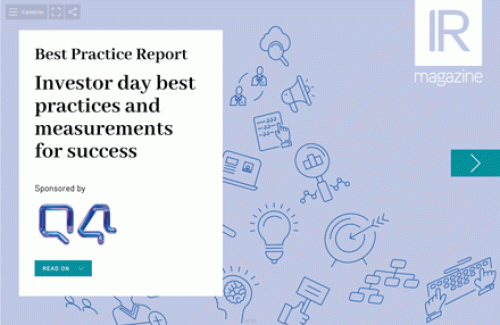‘In IR, we are facing a continuously growing number of ESG-related requests,’ says Angelika Heider, ESG IR manager at building giant Wienerberger. In fact, IR is at the forefront of the ESG conversation. Investor relations not only collaborates with the sustainability team but also often spearheads the effort.
At Barco, which won best ESG reporting (mid cap) at the IR Magazine Awards – Europe 2023, the sustainability department grew out of IR, says Willem Fransoo, director of investor relations. ‘The links [remain] close: we speak with each other very regularly,’ he explains.
With ESG and IR such clear bedfellows, how do companies bring these conversations into their investor events?
Engagement with stewardship teams ‘crucial’
At Mediobanca, Jessica Spina, group head of strategy and IR, describes the Italian investment bank’s approach as ‘holistic but selective,’ explaining that it first began engaging – around once a year and mostly on governance – a decade ago. ‘When E and S started to feature more strongly, with investor stewardship teams growing to cover different topics, we started to organize off-season and pre-AGM roadshows covering all three pillars,’ she says.
There were physical ESG roadshows in Milan while the bank also attended Borsa Italiana’s Sustainability Week, organized with several brokers. The pandemic put an end to physical anything, of course, and Spina says the virtual format has continued as it is both convenient and serves to reduce the firm’s carbon footprint. Still, she says Mediobanca is now considering a return to in-person ESG roadshows.

When it comes to the logistics, the bank keeps its ESG roadshows largely in-house, occasionally leaning on outside support – and learning from any necessary external expertise. Spina says that as the bank’s ESG engagement has matured, it has been able to ‘more fully manage that dialogue’ itself.
Often, when you hear about ESG engagement, companies talk about the opportunity to ‘broaden’ the management bench. Spina notes that while an equity roadshow would feature the CEO and head of IR, the ESG roadshow team would be made up of the heads of sustainability, remuneration and corporate affairs, as well as the ESG IR manager.
Do attendees differ, too? It all depends on the firm, she explains: ‘In some cases we meet ESG or stewardship teams, in others we meet a mixed team – for example, ESG plus the portfolio manager. But we might also meet just a portfolio manager who has been asked to cover ESG topics.’
The benefits of Mediobanca’s engagement are tangible. The bank gathers feedback immediately after meetings but Spina also points out that AGM attendance and voting outcomes serve as an indicator that the team is doing things right. ‘In the last four years, engagement with stewardship teams has been crucial as we had activists at our AGM,’ she adds.
‘Environmental impact and indirect emissions have driven the [ESG] discussion in the past year. We are strongly focused on diversity and inclusion and we would like to drive part of our future engagement on this topic. Governance is also a hot topic as the next AGM will [see a] vote for the renewal of the board of directors.’
Sustainability in your equity story
As the world’s largest brick builder, Wienerberger has been talking environmental issues for years. Heider explains that the firm holds ESG roadshows as well integrating its ESG messages into wider meetings and investor events, including the firm’s capital markets days.
‘We don’t see sustainability as a separate topic, but core to our business strategy,’ says Heider. ‘As such, we present an equity story that not only captures the financial aspects of our strategy but also the key drivers in achieving our goals – which includes key sustainability targets.’
For her, the fundamental nature of ESG issues to Wienerberger – to its business strategy and value creation – means it is a natural fit for the company’s capital markets day, where ESG is presented ‘through the lens of its relationship with our core business strategy’.
She explains that the company has increasingly focused on highlighting the link between its sustainability efforts and long-term value creation, at the same time that an ‘increasing number of investors within our shareholder base are eager to understand how we are dealing with material issues, such as climate change and the energy crisis’.
Wienerberger is also increasingly seeing those ESG considerations incorporated into investors’ decisions, adds Heider. ‘We do hold specific ESG events for investors, in the form of our annual ESG roadshow, for example,’ she says. ‘But we feel there is a strong appetite to hear an integrated equity story that covers both the financial and non-financial elements of the business performance and strategy.’
ESG is a consideration for the ‘vast majority’ of investors in the company and Heider says the firm reaches out to all investors to see whether they want to engage on sustainability topics rather than specifically seeking to target ESG investors.
‘But we have a good sense as to which investors will entertain the opportunity to engage on these topics, be it during our capital markets day or ESG roadshow,’ she notes. ‘Our team evaluates our shareholder register carefully to see which specific funds hold our shares. We don’t only look at the institutional level, but the specific funds that are invested to determine the key priorities of fund managers.
‘We are very happy to see an increasing position of thematic funds in our shareholder base that allows us to engage specifically on topics they are interested in – from water and biodiversity to circularity.’
While Heider notes the appetite for a full equity story that incorporates ESG rather than setting it out as a side conversation, how does she measure the effectiveness of the firm’s sustainability communications as far as the capital markets day goes?
‘This is difficult to quantify,’ she admits, ‘but we do actively solicit feedback from market analysts and investors on our capital markets day. From our perspective, the most important testament would be the type of active managers we are able to attract to invest in our equity story. We believe we have been able to attract and retain high-quality, long-term active managers to invest in Wienerberger.’
Biodiversity and diversity
Some of the most relevant environmental topics for Wienerberger are climate, biodiversity, circular economy and water management, explains Heider. ‘Climate has always been an important focus area for us and most connected to our business, especially as it relates to climate adaptation as the world experiences the impacts of climate change,’ she says.
‘Biodiversity, which is very closely linked to climate change, has gained increasing importance with the launch of the Taskforce on Nature-related Financial Disclosures and science-based targets for nature and we are expecting increasing investor pressure on the topic. Circular economy is also an area of focus for us. Finally, we focus on water management – both in terms of how we use it and the solutions we can offer.’
On the social side, Heider says the firm is taking ‘active steps’ in terms of health and safety and being an ‘employer of choice’ by attracting a diverse workforce as well as seeking to retain and motivate its employee base.
Fransoo estimates that ESG accounts for 5 percent to 10 percent of the questions in a typical investment meeting. ‘That is so different from a dedicated conference,’ where the firm has its most involved ESG investor conversations, he continues. ‘If it’s an ESG conference, it’s clear for all parties that that’s the topic of the day. You do get some other questions as well, but more like 80 percent to 90 percent of the time is dedicated to ESG.’
Fransoo says that while ESG has been embedded in Barco’s strategy for a number of years, it can be ‘frustrating’ to not always see that effort acknowledged by the market.
ESG conference participation
Barco typically attends two ESG conferences per year, one physical and one virtual, allowing it to cast a wide geographic net. Such engagements offer a more relaxed opportunity to talk sustainability, as well as give validation to the firm’s efforts.
‘Investors are very well prepared when we set up slots in an ESG conference: they have read our sustainability report in detail and prepared questions and suggestions in quite some depth,’ Fransoo notes. ‘And this is really nice because we can answer them with quite a bit of detail.’

These meetings are not just about answering investor questions, of course. Fransoo points out that they also serve as an opportunity to gain insight into what matters to the investment community when it comes to ESG at Barco.
‘We previously discussed the importance of managing our suppliers and how they are performing ESG-wise – and how Barco is tackling the whole procurement process and monitoring the progress of our suppliers,’ he explains. ‘As investors jumped on the subject, we knew it was gaining importance and drawing the attention of the investor community.’
Given the benefits of talking sustainability, why doesn’t Barco hold ESG-specific events itself? While Fransoo hasn’t ruled this out, he says that right now, participating in ESG conferences serves the company well. ‘It really depends on your investor base,’ he says. ‘We do have investors that are sensitive to ESG but I don’t think we have a lot of investors that are pure ESG players.’
Still, conversations around the company’s ESG efforts help highlight Barco’s longer-term vision. ‘Sustainability is a long-term topic,’ Fransoo notes. ‘It’s not something where you can turn the needle in just one quarter: it takes time. It is also something that is constantly evolving – there will always be next steps to take.
‘So ESG helps to bring out the story of Barco being a long-term-focused company, which of course is the story we want in the market: that we are not living from quarter to quarter, but that we have a long-term vision.’
As well as supplier management, Fransoo says governance is a topic that is increasingly discussed – though often on a specific, fund-by-fund voting case rather than around broad issues. ‘Particularly around the time of the AGM, we often have investors contacting us with their concrete voting intentions,’ he explains.
‘If their voting intentions deviate from what management recommends, some offer to explain their position and what they would like to see instead. This is mostly governance-related – it has to do with specific board members, or the remuneration report, with financial bonus targets – topics where many funds have quite strict rules in place that they follow in their voting recommendations. These are interesting conversations, but very narrow.’










